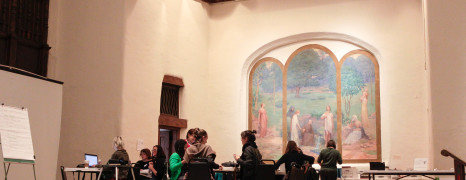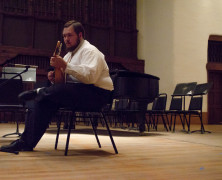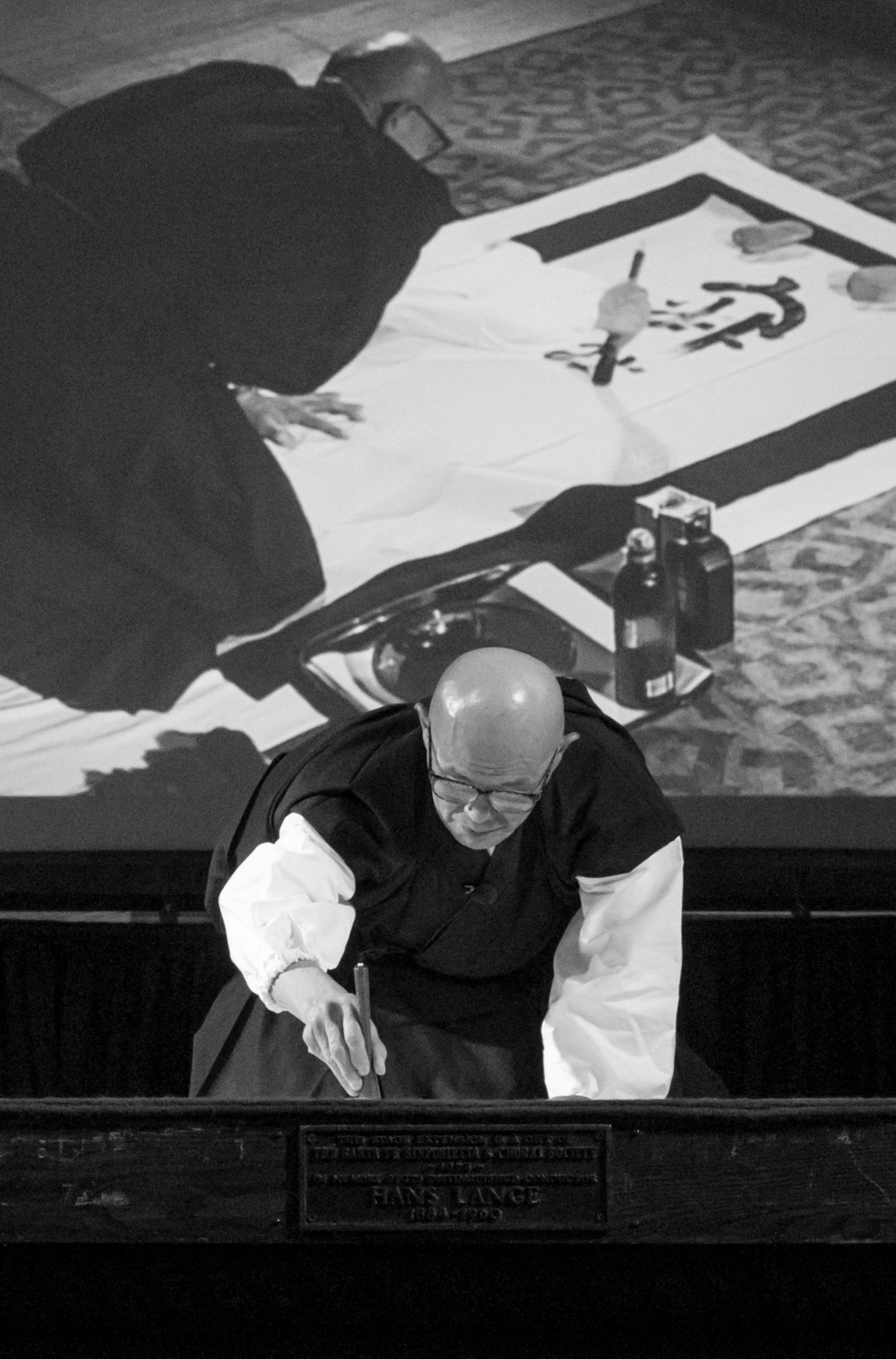On March 5, people all around the world gathered together to edit or create Wikipedia pages in honor of women throughout history who haven’t had their accomplishments recognized on the Internet. Santa Fe was no exception.
Happy Bday Bach
posted by Andrew Koss
Musicians gather for sound checks at St. Francis auditorium. They are preparing for the day’s concert in honor of Johann Sebastian Bach’s 330th birthday, and come from all backgrounds: amateurs, students and professionals. SFUAD Contemporary Music Program major John Church sits stage left with a shotgun mic aimed at his mandolin. Over spring break, Church said he was pretty nervous about the upcoming performance. “As time goes on it dwindles, but it might start back up again.” Two men roll a grand piano across the wooden stage. Scattered spectators populate the auditorium’s creaky pews. The pianist takes his seat and warms up for his performance of Kreuz und krone from Bach Cantata No. 12. Fitzhugh de Gogorza Cline stands in front of the piano, practicing her vocals for the Aria. World class oboist Gerald Fried rounds out the trio. Fried is most well known for composing the scores for the original Star Trek episode, “Amok Time,” the television mini-series Roots and several of Stanley Kubrick’s films. Church expected to see him at the March 21 performance, but was unsure of who would be joining Fried on his piece. “He’ll probably be accompanied on the piano by [SFUAD Contemporary Music Program instructor] Deborah Ungar or someone else,” Church says. That someone else turns out to be Oscar-winning film composer and jazz pianist Dave Grusin. It’s enough to make any budding musician nervous. Cline walks down a set of wooden stairs adjacent to the stage. The hem of her black dress flutters around her boots. Church hammers out the Prelude to Bach’s Cello Suite No. 1 in G Major. “Who would’ve thought?” Cline says. “What’s that?” Church asks. “Who would’ve thought that Bach would sound so good on the mandolin?” “Oh, thank you. Your voice sounds wonderful as...
Night of Written Zen with Shodo Harada Roshi...
posted by Charlotte Martinez
By Charlotte Martinez/Photos by Natalie Abel From the wall paintings on St. Francis’s auditorium in downtown Santa Fe, an image of the catholic saint gazes with pastel eyes at the scene forming in the front of his pews. Three robed members of the Tahoma One Drop Zen Monastery from Whidbey Island are seated on the stage, peering indifferently at the audience as they file in. A fourth member stands, monitoring a pile of blank canvases and a bowl of black ink on the stage floor. Positioned in front of these tools is at camera that projects the image on a large screen. This, no doubt, is for the convenience of those audience members who just hate when they can’t see. Japanese Master Shodo Harada Roshi stands on Francis’s stage with his hands clasped against his long black robe. He, like the others, looks serene and statuesque in what I can only label as a zen zone, but looking at the wise wrinkles and slick head I can’t help but calculate the master’s age. If he was born in 1940, his face is that of a 73-year-old, but even this doesn’t seem right. His face is too shaped and his posture too perfect; could this be a side effect of a disciplined life? If I feel like shaking his hand to obtain wisdom, is that too “western” of me? His interpreter and facilitator, Daichi-Priscilla Storandt, sits next him with a kind-looking grin which contrasts the Roshi’s stoic one. If balance is essential in Buddhism, then the coupling is just short of perfect. Books on the Roshi’s calligraphy works are for sale in front and I wonder if St. Francis objects to this display. The Roshi perhaps feels this too, and despite his title, practice...




 Jackalope Magazine is the student magazine of Santa Fe University of Art and Design. Building on the interdisciplinary nature of our education, we aim to showcase the talent of our university and character of our city.
Jackalope Magazine is the student magazine of Santa Fe University of Art and Design. Building on the interdisciplinary nature of our education, we aim to showcase the talent of our university and character of our city.
Recent Comments